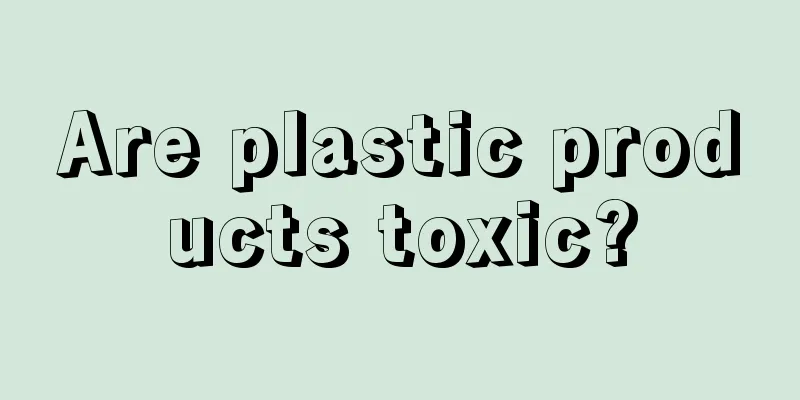Are plastic products toxic?

|
I believe that many of my friends have used plastic products in daily life. Although many friends also know that long-term consumption of plastic products will have some adverse effects on people's health, plastic products can carry some items very well, which will provide many convenient conditions for people's lives. So are plastic products toxic? In response to this question raised by everyone, please share with me in the next period of time. Recently, a well-known online media tested plastic bottles of beverages and condiments from 12 brands including Coca-Cola and Lee Kum Kee. The results showed that 9 of the PET (polyester) bottles were found to contain the carcinogen - heavy metal antimony, while the remaining 3 PP (polypropylene) and HDPE (high-density polyethylene) bottles were not found to contain antimony. As soon as the news came out, consumers immediately raised questions: Where does the antimony come from? Will the food safety of the bottle be affected? Can PET packaging avoid antimony? 70% of plastic bottles are made of PET When the reporter visited several large supermarkets and food stores in the city yesterday, he learned that beverages and condiments found to contain the heavy metal antimony are still being sold normally. Many sales staff told reporters that they were not aware of the news that PET plastic bottles contain carcinogenic metals, and they have not received any relevant notifications from manufacturers or stores regarding such products. It is understood that the material of plastic bottles is usually printed on the bottom of the packaging, with a triangle surrounded by arrows as a logo, and the numbers represent the type of plastic: number 1 is PET, 2 is HDPE, and 5 is PP. The reporter found through investigation that currently, nearly 70% of the bottles of plastic bottled beverages, purified water, soy sauce, vinegar, cooking wine, etc. on the market are made of PET material. Antimony residues in the PET production process So, does the metal element antimony really exist in PET plastic bottles? Professor Wang Hao from the School of Food Engineering and Biotechnology of Tianjin University of Science and Technology said, "The production of PET often requires a catalyst to promote the polycondensation reaction, and antimony-based catalysts are effective and low in price, so they are widely used, while plastic products made of other materials rarely use antimony as a catalyst." Wang Hao said that since the production process does not include the process of removing antimony, antimony will remain in the bottle made of PET. I believe that with the above sharing by all of us, our friends have a deeper understanding and cognition about whether plastic products are toxic. Of course, what I want to tell you is that plastic products contain a lot of chemicals, so they are not suitable for long-term use by people. Especially for some infants and young children, plastic products will produce some toxins after being heated, so this requires people to pay more attention. |
>>: Is tartar powder poisonous?
Recommend
How to determine if a routine blood test before employment is unqualified
When applying for a new job, you first need to ta...
Can I drink dandelion and brown sugar together?
Dandelion is a common plant in our lives, and it ...
What to do if you get a stitch in the side
People who do not exercise regularly may experien...
Can brainstem infarction be cured?
The symptom of brainstem infarction is difficult ...
What to do if the corners of your mouth are rotten? Here are some tips to relieve it
The reason for the sore corners of the mouth is m...
What medicine is good for high blood pressure
Many people know that high blood pressure, especi...
How to pick and wash Chinese toon
Spring is the time when Chinese toon starts to be...
What to do if the quilt is too damp
If the air is too humid, the quilts and mattresse...
What harm does hamartoma cause
What harm does hamartoma cause? It is normal to g...
The surgical treatment of brain cancer is like this
In recent years, brain cancer has gradually risen...
What is the role of adding alkali to flour
Nowadays, many people add some yeast powder to th...
Nursing of drainage tube after bladder cancer surgery
My grandfather is 72 years old this year. He is a...
What are the early symptoms of colon polyps?
When colon polyps occur, we must also pay attenti...
How many years can a patient with advanced breast cancer generally live after surgery?
How many years can you usually live after surgery...
Remove blackheads and spots
Many people have blackheads and spots on their fa...









